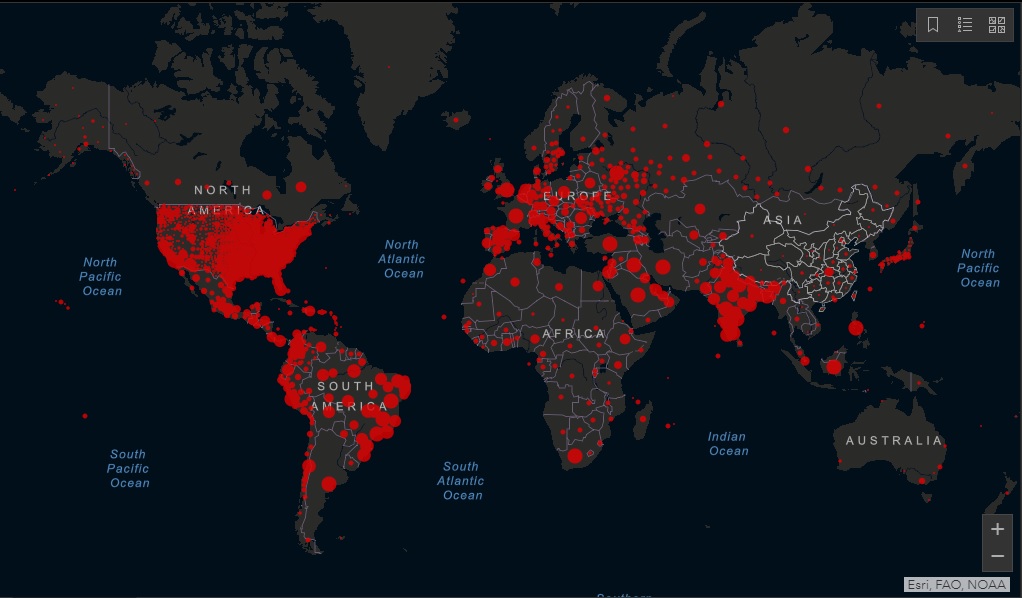
Tech Monitor “Five Questions” slot puts a senior IT leader in the spotlight every Monday. Today, mapping and spatial analytics specialist Esri UK managing director Stuart Bonthrone joins us to talk geospatial data, architecture, and flunking his A-levels.
What’s the biggest challenge for Esri UK clients?
One of the key challenges our customers face is getting the voices of Geography Information Systems (GIS) specialists heard within the organisations they work for.
The sheer breadth and depth of GIS technology can make it difficult to convey what’s possible to the executive leadership of a company. For instance, the technology can be used for everything from deciding new locations for retail stores or housing, to calculating insurance premiums, or even ensuring that lifeboats are staffed.
We work closely with our clients, illustrating where GIS can bring benefits to their organisation specifically – prompting them with questions, and working with them to reframe issues with location as the red thread pulling it all together. We use this approach industry by industry, problem by problem.
What technology excites you the most?
While I know Artificial Intelligence has become a bit of a buzzword across multiple industries, it has been truly incredible for me to witness the combination of AI and GIS – as it really has taken the technology to new and exciting levels.
As an example, the predictive analytics that are possible with AI and location intelligence means that the technology can accurately predict the financial performance of a new store before it’s even been built. Financial executives can order a full-year revenue projection for a bank branch in a market they’re evaluating and receive it in seconds. This kind of analysis simply wouldn’t have been possible previously, which is why it’s so exciting.
As another example, it can also be used to personalise insurance premiums, which are currently calculated based on generalised demographic trends. By basing the cost on an individual’s behaviour, we can make insurance costs fairer.
However, I think the most exciting advancement in GIS technology over recent years has been its shift to the cloud. This shift has made it possible for teams across the world to inexpensively create, edit, analyse and share maps, apps, and geospatial data. Plus it means that updates can be synced within seconds, which helps teams to collaborate no matter where they are.
This move to the cloud has dramatically increased the accessibility of GIS software, as well as its scalability. For example, John Hopkins University used Esri’s geospatial cloud technology to produce the global dashboard monitoring the spread of coronavirus. At its peak, the dashboard was being accessed 5,000 times a second. Even with billions of hits, the technology remained stable. I think it’s incredibly exciting that GIS technology is now so accessible and scalable, that it can be used to monitor the spread of a virus across the world, and that it’s accessible to everyone with an internet connection.
Greatest success at Esri UK or elsewhere?
It might sound small, but discovering the importance of work-life balance has been my greatest success. It’s completely changed not only how I approach my own life, but also how I manage teams of people.
Ten years ago, I was widowed. Suddenly, I had sole responsibility for raising three young children. At the same time, I was also running a number of multi-million-pound organisations across multiple countries for a global corporation.
I was stopped in my tracks, forced to completely re-evaluate my priorities, and I had to learn how to proactively manage the balance between my work and personal circumstances.
Seeing the difference this made to my life, I also transferred this learning into my management style. I’m not interested in tracking the hours that people do, my focus is on an employee’s wellbeing and the quality of their output.
Ultimately, this approach has made us a happier, healthier and more profitable company. Ten years later, I have three successful and happy children, and I’m managing a thriving business that’s nearly doubled its revenue over the past five years.
Worst failure?
While it’s embarrassing to admit – I completely flunked my A-Levels, getting two Es and a U. Making it more embarrassing, I’d actually won an award for my outstanding O-Level grades. So when I started my A-levels, I thought that I could get through with natural aptitude alone. I didn’t understand that it didn’t matter whether you were smart, you also had to put the hours in and apply yourself to the work.
I only made it into university through clearing, and the lesson I learned was that there is no substitute for hard work. I was lucky enough to learn this lesson very early on in my life. You might think you’re smart and you might think you’re clever, but you still have to put the effort in. Whenever you look at anybody successful, behind them are hours of practice and learning.
What would you be doing in another life?
I would have loved to become an architect. Visiting different styles of architecture is one of my favourite parts of travelling – if I go to Barcelona, it is all about experiencing Gaudi for me. Through a combination of science and design, architects have the power to create better living and working spaces for people. It’s immensely important, especially as the buildings and places that surround us have such a dramatic impact on happiness and wellbeing.






